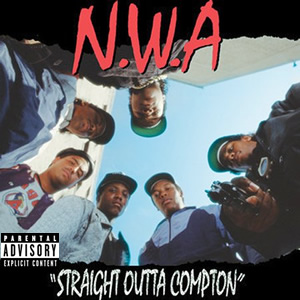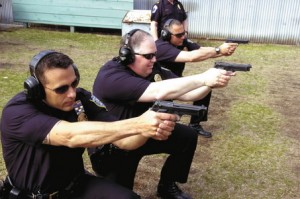In general, people tend to think of themselves as not possessing biases or, at the very least, less susceptible to them than the average person. Roughly paraphrasing from Jason Weeden and Robert Kurzban’s latest book, when it comes to debates, people from both sides tend to agree with the premise that one side of the debate is full of reasonable, dispassionate, objective folk and the other side is full of biased, evil, ignorant ones; the only problem is that people seem to disagree as to which side is which. To quote directly from Mercier & Sperber (2011): “[people in debates] are not trying to form an opinion: They already have one. Their goal is argumentative rather than epistemic, and it ends up being pursued at the expense of epistemic soundness” (p.67). This is a long-winded way of saying that people – you and I included – are biased, and we typically end up seeking to support views we already hold. Now, recently, owing to the events that took place in Ferguson, a case has been made that police officers (as well as people in general) are biased against the black population when it comes to criminal justice. This claim is by no means novel; NWA, for instance, voiced in 1988 in their hit song “Fuck tha police”.
They also have songs about killing people, so there’s that too…
Is the justice system and its representatives, at least in here in the US, biased against the black population? I suspect that most of you reading this already have an answer to that question which, to you, likely sounds pretty obvious. Many people have answered that question in the affirmative, as evidenced by such trending twitter hashtags as #BlackLivesMatter and #CrimingWhileWhite (the former implying that people devalue black lives and the latter implying that people get away with crimes because they’re white, but they wouldn’t if they were black). Though I can’t speak to the existence or extent of such biases – as well as the contexts in which they occur – I did come across some interesting research recently that deals with a related, but narrower question. This research attempts to answer a question that many people feel they already have the answer to: are police officers (or people) quicker to deploy deadly force against black targets, relative to white targets? I suspect many of you anticipate – correctly – that I’m about to tell you that some new research shows people aren’t biased against the black population in that respect. I further suspect that upon hearing that, one of your immediate thoughts will be to figure out why the conclusion must be incorrect.
The first of these papers (James, Vila, & Daratha, 2013) begins by noting that some previous research on the topic (though by no means all) has concluded that a racial bias against blacks exists when it comes to the deployment of deadly force. How did they come to this conclusion? Experimentally, it would seem they used a research method similar to the Implicit Association Task (or IAT): they have participants come into a lab, sit in front of a computer, and ask them to press a “shoot” button when they see armed targets pop up on screen and a “don’t shoot” button when the target isn’t armed. James, Vila, & Daratha (2013) argue that such a task is, well, fairly artificial and, as I have discussed before, artificial tasks can lead to artificial results. Part of that artificiality is that there is no difference between the two responses in such an experiment: both responses just involve pushing one button or another. By contrast, actually shooting someone involves unholstering a weapon and pulling a trigger, while not shooting at least does not involve that last step.So shooting is an action; not shooting is an inaction; pressing buttons, however, are both actions, and simple ones. Further, sitting at a computer and seeing static images pop up on the screen is just a bit less interactive than most police encounters that lead to the use of deadly force. So, whether these results concern people’s biases against blacks translate to anywhere outside the lab is an open question.
Accordingly, what the authors of the current paper did involved what must have been quite the luxurious lab set up. The researchers collected data from around 60 civilians and 40 police and military subjects. During each trial, the subjects were standing in an enclosed shooting range with a large screen that would display a simulations where they might or might not have to shoot. Each subject was provided with a modified Glock pistol (that shot lasers instead of bullets), holsters, and instructions on how to use them. The subjects each went through in between 10-30 simulations that recreated instances where officers had been assaulted or killed; simulations which included naturalistic filming with paid actors (as opposed to the typical static images). The subjects were supposed to shoot the armed targets in the simulation and avoid shooting unarmed ones. As usual, the race of the targets was varied to be white, black, or hispanic, as well as whether or not the targets were armed.
Across three studies, a clear pattern emerged: the participants were actually slower to shoot the armed black targets by in between 0.7 – 1.35 seconds, on average; no difference was found between the white and hispanic targets. This result held for both the civilians and the police. The pattern of mistakes people made was even more interesting: when they shot unarmed targets, they tended to shoot the unarmed black targets less than the unarmed white or hispanic targets; often substantially less. Similarly, subjects were also more likely to fail to shot an armed black target. To the extent that people were making errors or slowing down, they were doing so in favor of black targets, contrary to what many people shouting things right now would predict.
“That result is threatening my worldview; shoot it!”
As these studies appear to use a more realistic context when it comes to shooting – relative to sitting at a computer and pressing buttons – it casts some doubt as whether the previous findings that were uncovered when subjects were sitting at computer screens are able to be generalized to the wider world. Casting further doubt on the validity of the computer-derived results, a second paper by James, Klinger, & Vila (2014) examined the relationship between these subconscious race-base biases and the actual decision to shoot. They did so by reanalyzing some of the data (n = 48) from the previous experiment when participants had been hooked up to EEGs at the time. The EEG equipment was measuring what the authors call “alpha suppression”. According to their explanation (I’m not a neuroscience expert, so I’m only reporting what they do), the alpha waves being measured by the EEG tend to occur when individuals are relaxed, and reductions of alpha waves are associated with the presence of arousing external stimuli; in this case, the perception of threat. The short version of this study, then, seems to be that reductions in alpha waves equate, in some way, to more perception of threat.
The more difficult shooting scenarios resulted in greater alpha suppression than the simpler ones, consistent with a relation to threat level but, regardless of the scenario difficulty, the race effect remained consistent. The EEG results found that, when faced with a black target, subjects evidenced greater alpha suppression relative to when they confronting a white or hispanic target; this result obtained regardless of whether the target ended up being armed or not. To the extent that these alpha waves are measuring threat response on a physiological level, people found the black targets more threatening, but this did not translate into an increased likelihood to shoot them; in fact, it seemed to do the opposite. The authors suggest that this might have something to do with the perception of possible social and legal consequences for harming a member of a historically oppressed racial group.
In other words, people might not be shooting because they’re afraid that people will claim that the shooting was racially motivated (indeed, if the results had turned out the opposite way, I suspect many people would be making that precise claim, so they wouldn’t be wrong). The authors provide some reason to think the social concerns of shooting might be driving the hesitation, one of which involves this passage from an interview of a police chief in 1992:
“Bouza…. added that in most urban centers in the United States, when a police chief is called “at three in the morning and told, ‘Chief, one of our cops just shot a kid,’ the chief’s first questions are: ‘What color is the cop? What color is the kid?’” “And,” the reporter asked, “if the answer is, ‘The cop is white, the kid is black’?” “He gets dressed,”
“I’m not letting a white on white killing ruin this nap”
Just for some perspective, the subjects in this second study had responded to about 830 scenarios in total. Of those, there were 240 that did not require the use of force. Of those 240, participants accidentally shot a total of 47 times; 46 of those 47 unarmed targets were white (even though around a third of the targets were black). If there was some itchy trigger finger concerning black threats, it wasn’t seen in this study. Another article I came across (but have not fact checked so, you know, caveat there) suggests something similar: that biases against blacks in the criminal justice system don’t appear to exist.
Now the findings I have presented here may, for some reason, be faulty. Perhaps better experiments in the future will provide more concrete evidence concerning racial biases, or lack thereof. However, if you first reaction to these findings is to assume that something is wrong with them because you know that police target black suspects disproportionately, then I would urge you to consider that, well, maybe some biases are driving your reaction. That’s not to say that others aren’t biased, mind you, or that you’re necessarily wrong, just that you might be more biased than you like to imagine.
References: James, L., Vila, B. & Daratha, K. (2013) Influence of suspect race and ethnicity on decisions to shoot in high fidelity deadly force judgment and decision-making simulations. Journal of Experimental Criminology, 9, 189–212.
James, L., Klinger, D., & Vila, B. (2014). Racial and ethnic bias in decisions to shoot seen through a stronger lens: Experimental results from high-fidelity laboratory simulations. Journal of Experimental Criminology, 10, 323-340.




Fox News Reporter Stumps NYC Protester
http://www.ebaumsworld.com/video/watch/84378413/